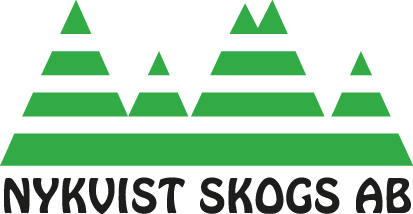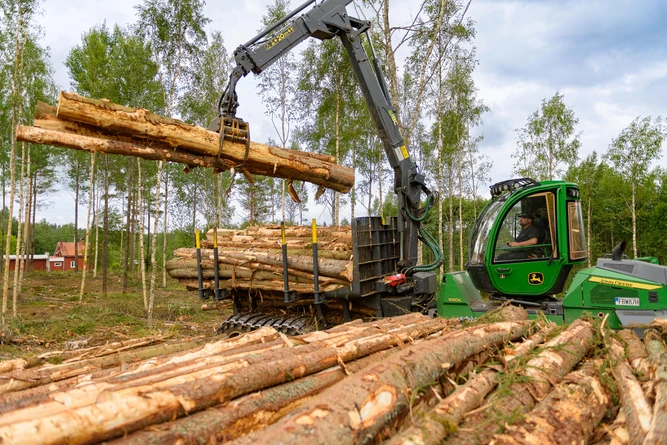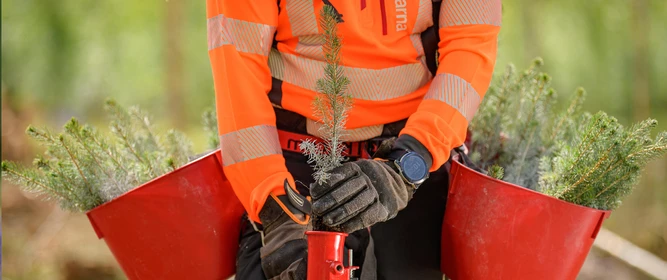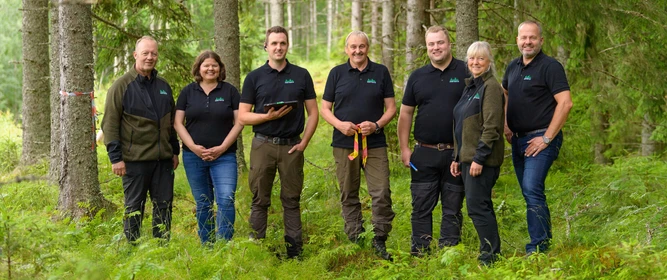Frequently asked questions from forest owners
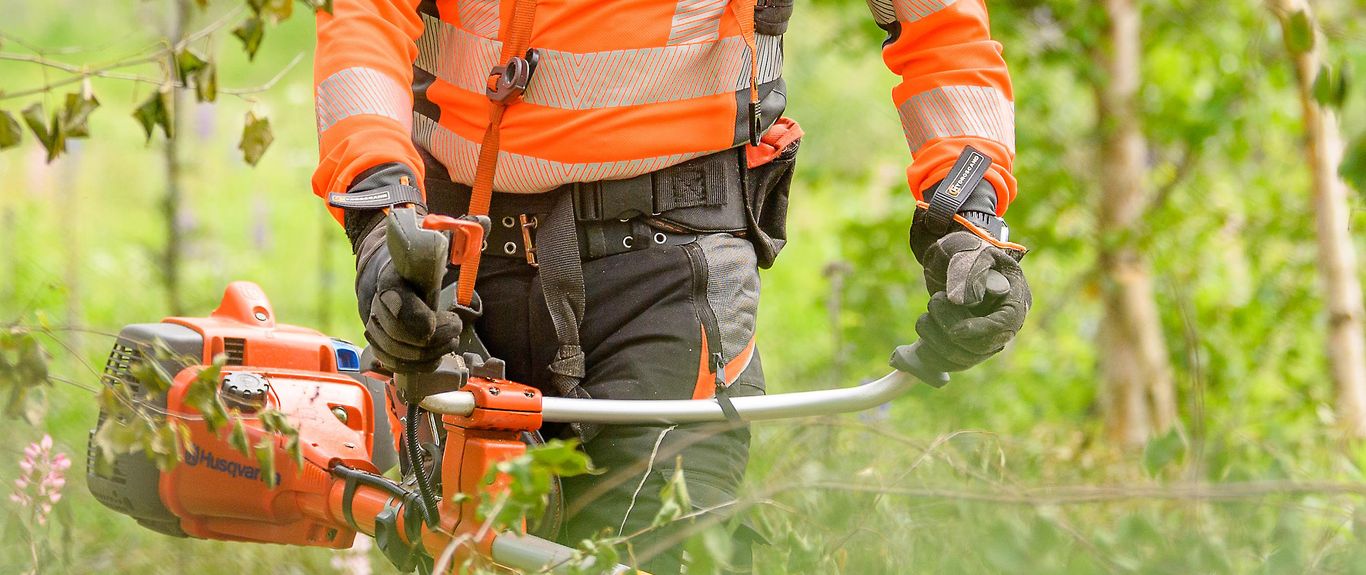
Our tips, advice and answers to the frequently asked questions from forest owners
Owning and managing forests raises many questions. On this page, we have collated answers to frequently asked questions to help you as a forest owner make informed decisions. You will find here our best practical advice and tips on everything from timber trading and forest management to how to plan for the future and protect your forest against various threats.
Frequently asked questions about forest management
Effective forest management is crucial to ensure long-term growth, quality and biodiversity.
Frequently asked questions from forest owners are how best to clear and thin, what forest management measures are required and how to protect their forest from various threats. With the right strategy, a well thought-out forest management plan and consideration of natural values, you can create a productive and sustainable forest for the future.
Did you not find an answer to your question? Contact us below.
How should I clear and thin to maximise forest growth and quality?
Answer: Clearing and thinning are important to create a healthy and productive forest. Clearing is done early to give the best trees more space, while thinning is done later to favour the strongest stems. Recommendations vary depending on the species of tree and the density of the forest, so you may want to consult a forestry expert.
What forest management measures are needed to keep my forest healthy and productive?
Answer: Key measures include clearing, thinning and regeneration felling. After felling, it is important to plant new trees and ensure that new forest sprouts. Management actions should be planned according to the condition of the forest and your goals, and adapted to applicable legislation and environmental requirements. This can be done with the help of a forest management plan.
Do I need a forest management plan?
Answer: Yes, a forest management plan is a valuable tool to get a clear overview of the condition of the forest and to plan future actions. It helps you optimise management to achieve your goals, whether for profitability, recreation or nature conservation. A forest management plan is also a requirement for certified forests.
How can I protect my forest from storm damage, insect infestations and other threats?
Answer: To reduce the risk of storm damage, clearing and thinning should be done in a timely manner to create a stable and strong forest. Mixing different tree species and ages can also contribute to a more stable forest. Protection against insect infestations, such as the spruce bark beetle, can involve quickly felling infested trees and keeping the forest well-managed. Regular monitoring is key.
Frequently asked questions about the timber trade and felling
Managing forests means making wise decisions for both present and future returns. Forest owners often have questions about when and how to fell for the best economic results, what forms of sale are available and how timber transactions work. Generational renewal, management costs and tree species selection are also important topics to understand to maximise forest value and sustainability.
Did you not find an answer to your question? Contact us below.
When is the optimal time to harvest my forest to maximize returns?
Answer: The best time to fell depends on several factors, such as the age of the trees, soil conditions and current timber prices. In general, it is most profitable to fell when the trees have reached their economic maturity, which varies depending on the tree species. It is also important to keep an eye on market trends and the forest management plan to determine the right timing.
How does a timber transaction work?
In brief, a timber transaction includes the following steps:
- The timber buyer looks over the forest stand together with the forest owner. This can include the distribution of tree species, the age and volume of trees.
- The timber buyer identifies which parts of the forest are ripe for harvesting and what actions to take (e.g. final felling or thinning)
- You discuss the price, payment terms, felling date and any other terms to be included in the agreement.
- The timber buyer will draw up a written agreement with you. The agreement includes the felling area, volume calculation, form of sale, payment terms and environmental considerations.
- The timber buyer ensures that everything is in line with the Swedish Forestry Act and any certification requirements.
- The timber buyer plans the felling, which is carried out, and the timber is then loaded and transported to the industry.
- When the timber arrives at the industry, Biometria carries out an impartial measuring on reception and quality assessment.
- The final statement is sent to the forest owner and payment is made according to the terms of the agreement.
What costs should I expect for final felling?
Answer: The biggest expenses are felling costs. The forest owner also needs to pay for replanting and forest management measures, which is a legal requirement after felling. Additional costs may arise if there are special requirements for nature conservation or if the terrain is difficult. It is important to take these costs into account when calculating the overall profitability of felling.
Can thinning be a type of timber trade?
Answer: Thinning is essentially a forest management measure where the stand of trees is thinned to favour the growth, health and quality of the remaining trees. However, the harvested timber can still be sold and thus be part of timber trading. Prices for thinning wood are lower, as it is not as valuable as mature timber. Thinning wood mostly ends up at pulp mills.
Which tree species are most profitable to grow on my land?
Answer: The profitability of the tree species depends on soil quality, climate and timber market demand. Pine is often a good choice on drier soils, while spruce thrives on wetter soils and can produce high yields. Birch and other hardwoods can also be profitable.
Frequently asked questions about forest ownership, inheritance and forest economy
Generational renewal and inheritance are sensitive issues and having a clear strategy can make the process easier for all involved. The complexity of forest ownership is great and it is therefore important to plan carefully for future transfer and management.
Did you not find an answer to your question? Contact us below.
How can I best prepare for my children to inherit my forest?
Answer: It is important to plan for generational renewal well in advance. A good first step is to discuss with the family to understand the children's interest and desire to own the forest. You can then contact a lawyer or financial adviser to help you draw up a deed of gift, a will or a succession plan. You may also want to consider dividing the forest between your children or setting up a forestry company or a joint ownership arrangement, such as a family-owned limited company, to simplify ownership. Forest owners can also get tax advice to avoid unnecessary costs and optimise the economics of the transfer.
What happens to my forest when I die?
Answer: When a forest owner passes away, the forest property becomes part of the estate of the deceased, which is administered by the beneficiaries of the estate (those who inherit or have rights under the will). The management of the forest can continue as before, but decisions must be taken jointly by the co-owners until the inheritance is distributed. It is important to remember that the forest needs to continue to be managed even after death in order not to lose value. A will can provide clear guidance on how you want the forest to be managed and can reduce the risk of conflict between heirs.
